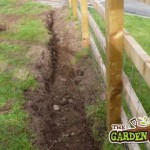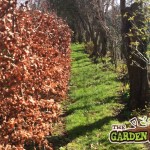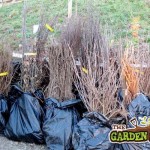Beech hedging is a very popular choice of hegding and for good reasons. One down side that I hear from time to time is that beech hedging, which is semi evergreen, looks ‘dead’ in the winter months! unfortunately there is little I can say to convince people of otherwise and so for those who don’t like beech, I suggest Laurel (or a brick wall).
- Trench for Beech Hedging
- Beech Hedging – spring
- Bare Root Hedging
Bare Root Beech hedging is a winner of a hedge for many reasons:
- Beech is moderately fast growing
- Beech is extremely hardy, and will not be moved by the coldest of frosts and winters. The leaves of the Laurels however will often turn black, even in a light frost.
- Beech is a good screening plant. As I stated, Beech is semi evergreen which means that even though their leaves wither and die in autumn, they retain their leaves over the winter months. The result is a plant with good screening both in summer and winter.
- Beech changes with the seasons. One of the best qualities of our temperate climate is our changing seasons. The variety and regularity of our seasons is quite unique and something that we all set our biological clocks to. With Beech you can see the 4 fours come and go and the varities of colours are reflected in it. In Spring the new shoots glow in a furry white, while summer brings lime green leaves with slowly fade over the months until autumn when faint hints of red appear before winter and the leaves turn to brown.
- Bare root beech hedging can be planted between the months of late September and Mid / Late April. Beech is a relatively late bloomer and so it’s bare root planting season is a bit longer than other bare root plants like wild rose or privet.
When planting bare root beech you should first measire the length of hedging required. Generally bare root beech is spaced 1ft apart, or 3 per metre. You can, however, space them a lot closer – if you want an instant hedge. The plants should be planted in a staggered pattern – rather than one straight line. This give a thicker and more robust hedge.
If you intend on planting a beech hedge I would recommend preparing the trench first. The trench size would depend on the size of your plants roots. Generaly, if you are buying beech hedging in a 2 – 3ft size your trench should be 1.5 ft wide and deep. If you are buying 4ft+ your trench should be 2ft wide and deep. If you prepare the trench before planting you can plant the hedging the moment it arrives. This is best practice as bare root plants should not be left out of the ground too long.
Add farm yard manure before planting and mix it through some top soil. This is the one chance you have to add and feed your soil so you should do it and it will really boost your plant and hedges performance. The manure should be atleast 6 months old and should not smell bad. You can use horse, chicken or cow manure.
Before planting, soak about 10 plants at a time in a bucket of water. I would generally soak 10, then position and plant 10 while another 10 are soaking. That way you can have a constant stream of freshly soaked plants.
To position the plants place each 1 in the trench, kicking a small amount of soil around it’s roots to hold in place. continue along until the 10 are positioned. Then I would go back and back fill the trench around these 10. As you press the soil in around each plant you should lift them slightly until the base of the root ball is just below the soil level. This helps spread the beech plant’s roots out and ensure they are planted at the right depth
After planting water the hedge in well. In the case of a drought, or 3 days without rain you should water the hedge again. Given about 20 Litres per 1 M of hedging


